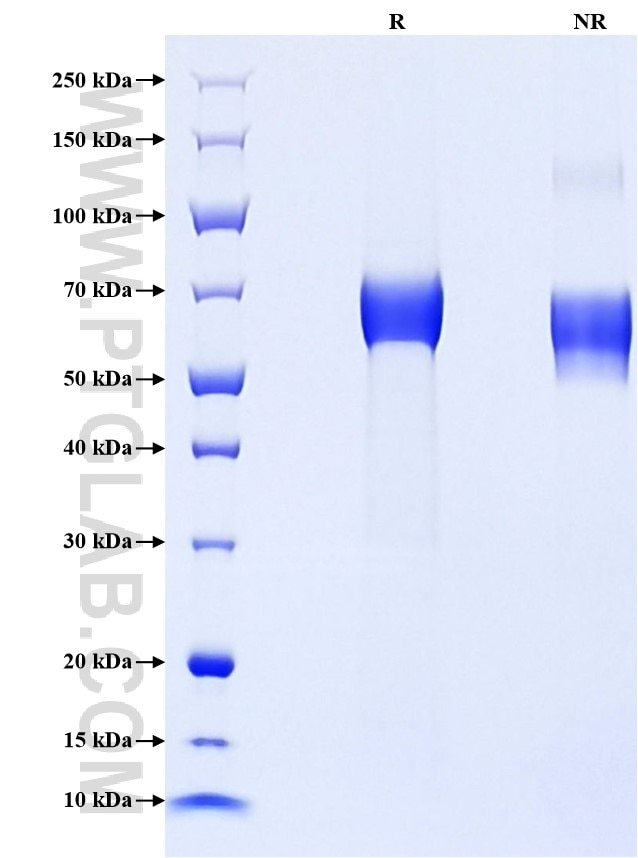Recombinant Human t-Plasminogen activator/tPA protein (Myc Tag, His Tag)
Species
Human
Purity
>90 %, SDS-PAGE
Tag
Myc Tag, His Tag
Activity
not tested
Cat no : Eg0178
Validation Data Gallery
Product Information
| Purity | >90 %, SDS-PAGE |
| Endotoxin | <0.1 EU/μg protein, LAL method |
| Activity |
Not tested |
| Expression | HEK293-derived Human t-Plasminogen activator protein Ser36-Pro562 (Accession# AAH95403) with a Myc tag and a His tag at the C-terminus. |
| GeneID | 5327 |
| Accession | AAH95403 |
| PredictedSize | 64.0 kDa |
| SDS-PAGE | 55-75 kDa, reducing (R) conditions |
| Formulation | Lyophilized from 0.22 μm filtered solution in PBS, pH 7.4. Normally 5% trehalose and 5% mannitol are added as protectants before lyophilization. |
| Reconstitution | Briefly centrifuge the tube before opening. Reconstitute at 0.1-0.5 mg/mL in sterile water. |
| Storage Conditions |
It is recommended that the protein be aliquoted for optimal storage. Avoid repeated freeze-thaw cycles.
|
| Shipping | The product is shipped at ambient temperature. Upon receipt, store it immediately at the recommended temperature. |
Background
Plasminogen activator, tissue (PLAT, synonyms: TPA, T-PA) is a tissue-type plasminogen activator, a secreted serine protease which converts the proenzyme plasminogen to plasmin, a fibrinolytic enzyme. Tissue-type plasminogen activator is synthesized as a single chain which is cleaved by plasmin to a two chain disulfide linked protein (33 kDa and 32 kDa). PLAT enzyme plays a role in cell migration and tissue remodeling. Increased enzymatic activity causes hyperfibrinolysis, which manifests as excessive bleeding; decreased activity leads to hypofibrinolysis which can result in thrombosis or embolism.
References:
1. Mangé A. et al. (2016) J Proteomics. 142:114-121. 2. Chen S. et al. (2017) Sci Rep.7(1):6871. 3. Jiang H. et al. (2017) Transl Psychiatry. 7(4): e1079.

